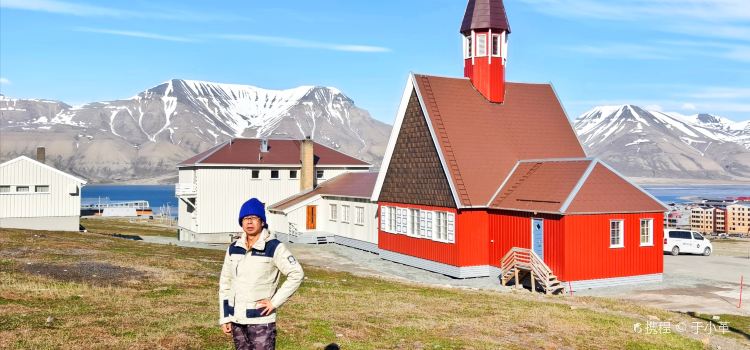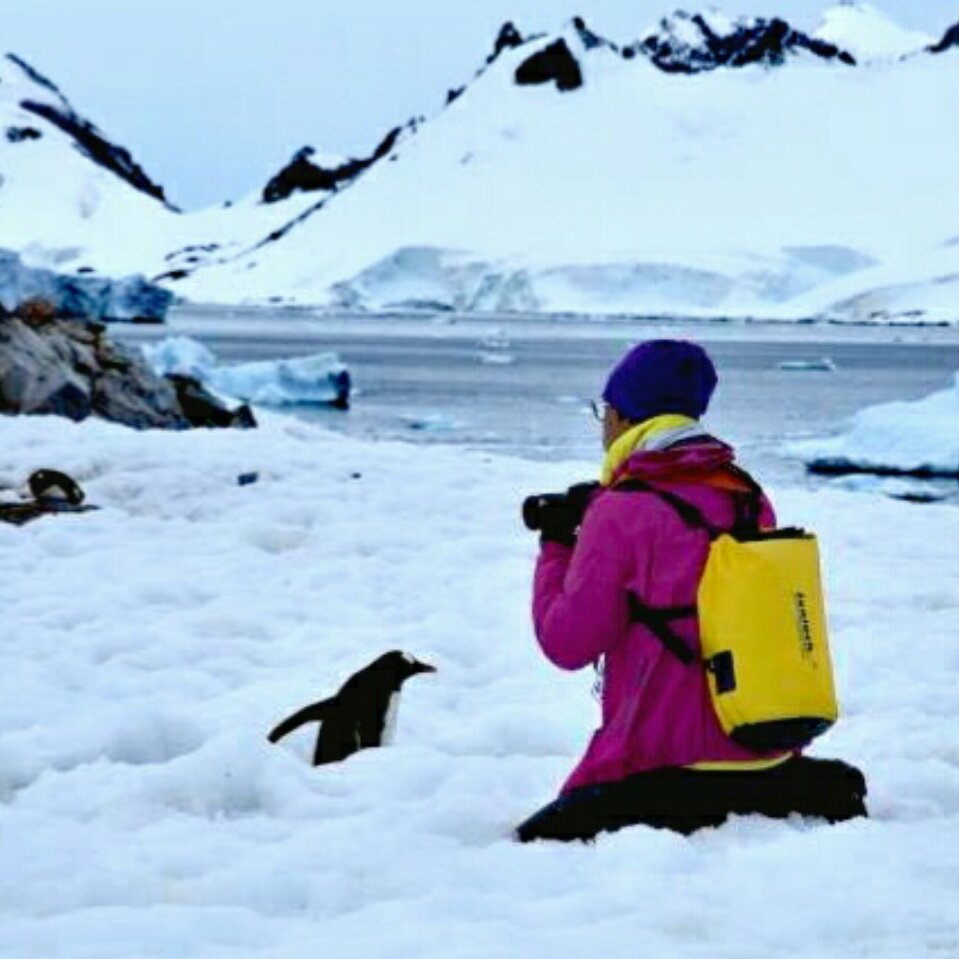Svalbar
No comments yet

Open Now|16:00-02:00
+47 79 02 50 03
What travelers say:

Longyearbyen, the capital of the Svalbard Islands in Norway, is located at 78 degrees north latitude, only 1,300 kilometers away from the North Pole. It is known as the world's northernmost city and is famous for its unique polar environment, laws prohibiting death and birth, and polar day and night phenomena.
Longyearbyen is located on Spitsbergen, the largest island in the Svalbard Islands. It is located in the Arctic ice field climate zone, with extremely low annual average temperatures, which can reach dozens of degrees below zero in winter, and the average temperature in summer is only around 5°C. 60% of the land is covered by glaciers, and the polar night (late November to mid-February) and polar day (mid-April to mid-August) phenomena are significant.
Polar bear threat: Residents need to carry guns for self-defense, and college freshmen need to receive shooting training.
Figure 1, Longyearbyen Polar Bear Road Sign
Figure 2, The World's Northernmost Post Office
Figure 3, The Arctic Exploration Museum displays exhibits related to the many expeditions conducted by explorers from various countries in the first half of the 20th century to reach the North Pole.
Figure 4-6, the first church in Longyearbyen was destroyed by Nazi German bombing during World War II. The current wooden church was rebuilt in 1958. The church is resident by a pastor and two employees and is open only from Tuesday to Friday throughout the year.
Figure 7-14, Longyearbyen
Figure 15, plane wreckage
Figure 18, Longyearbyen polar bear logo
Figure 19, World Seed Bank, the last Noah's Ark of mankind! This doomsday seed bank buried deep in the Arctic permafrost stores 4.5 million species and more than 2.25 billion grains of crop seeds, which can withstand nuclear bombs, earthquakes, and even glacier melting. The silver seed bags seal the millennium genes of wheat and sorghum, like a giant refrigerator guarding the backup of human civilization.
Figure 20, Longyearbyen Airport
More
Reviews of Svalbar
Some reviews may have been translated by Google Translate
0/5
All (4)
Latest
Photo reviews (3)
Longyearbyen, the capital of the Svalbard Islands in Norway, is located at 78 degrees north latitude, only 1,300 kilometers away from the North Pole. It is known as the world's northernmost city and is famous for its unique polar environment, laws prohibiting death and birth, and polar day and night phenomena. Longyearbyen is located on Spitsbergen, the largest island in the Svalbard Islands. It is located in the Arctic ice field climate zone, with extremely low annual average temperatures, which can reach dozens of degrees below zero in winter, and the average temperature in summer is only around 5°C. 60% of the land is covered by glaciers, and the polar night (late November to mid-February) and polar day (mid-April to mid-August) phenomena are significant. Polar bear threat: Residents need to carry guns for self-defense, and college freshmen need to receive shooting training. Figure 1, Longyearbyen Polar Bear Road Sign Figure 2, The World's Northernmost Post Office Figure 3, The Arctic Exploration Museum displays exhibits related to the many expeditions conducted by explorers from various countries in the first half of the 20th century to reach the North Pole. Figure 4-6, the first church in Longyearbyen was destroyed by Nazi German bombing during World War II. The current wooden church was rebuilt in 1958. The church is resident by a pastor and two employees and is open only from Tuesday to Friday throughout the year. Figure 7-14, Longyearbyen Figure 15, plane wreckage Figure 18, Longyearbyen polar bear logo Figure 19, World Seed Bank, the last Noah's Ark of mankind! This doomsday seed bank buried deep in the Arctic permafrost stores 4.5 million species and more than 2.25 billion grains of crop seeds, which can withstand nuclear bombs, earthquakes, and even glacier melting. The silver seed bags seal the millennium genes of wheat and sorghum, like a giant refrigerator guarding the backup of human civilization. Figure 20, Longyearbyen Airport
Svalbard Coal Mining: Svalbard Coal Company is the largest enterprise here. Svalbard Coal Mine is one of the most productive coal mines in the world. Without coal mining, there would be no Svalbard today. Coal mining is still an important part of Longyearbyen. Norwegian mining companies have two coal mines in and around Longyearbyen, and mining employs about half of the residents. In the 20th century, coal mining companies entered the Svalbard Islands, and many mine sites are still preserved on the island today. Back then, it was an extremely difficult place, and workers even died in dust storm accidents. It was not until 2002 that people found that tourism was more economically valuable than mining, and the mines were closed one after another. The houses in Longyearbyen were transformed from miners' dormitories to colorful hotels. Now it is not only a popular destination for tourists, but also a base for multinational scientific research teams to explore a carbon-neutral future. Figure 1, Longyearbyen Miners' Monument Figure 2, Gruwe No. 7 Coal Mine in the Adventdalen Valley in Svalbard, Norway. In order to reduce carbon dioxide emissions, the mine was closed two weeks later. However, with the closure of this coal mine, this living area with a century-old mining history has officially become history. In addition to providing energy for local energy plants, Grove 7 also exports coal to European metallurgical industries (such as Germany's automobile engine manufacturing industry). Figure 3-Figure 5, the mined coal is shipped from the Longyearbyen dock. Figure 6, near Longyearbyen No. 2 Coal Mine Figure 7, the cable car for transporting coal, walking on the streets of Longyearbyen, abandoned wooden cable car tracks can be seen everywhere on the hillside. Before mechanization, cable cars were used to transport coal from the mining area to the dock. Figure 8-Figure 20, visit No. 3 Coal Mine.
#創創彈計劃分萬萬现金 Imagine waking up in a place where there are more polar bears than people, the sun never sets at midnight in summer, and the aurora jumps across the sky in winter! Longyearbyen, Norway, one of the northernmost settlements on Earth, is really beyond imagination! This guide has all the practical tips + pitfall avoidance + gameplay, you can go straight after reading it! ⸻ 📌 Where is Longyearbyen? How to get there? 📍 Located in the Svalbard Islands, Norway, at 78° north latitude, only 1,300 kilometers away from the North Pole! This is the only place in the world where you are not allowed to have children, you cannot take care of your elderly, and you have to leave even if you die. It is a pure polar world! 🚀 How to get there? • Fly to Oslo first, then take Scandinavian Airlines (SAS) or Norwegian Airlines directly to Longyearbyen Airport (LYR). • Note: There are fewer flights in winter, so it is recommended to book tickets in advance! There are many tourists in summer, and air tickets are expensive! ⸻ 🏠 Accommodation recommendation: Choose according to your budget! 🚨 Note! Accommodation here is super tight! Make sure to book in advance, otherwise you can only stay in a tent (it will be really cold). 🌌 1. Aurora vs 24-hour sun: Depends on the season! •October-March: Aurora season! The purest Arctic night, the aurora explodes above your head! •May-August: Midnight sun season, the sun does not set for 24 hours, and it is no problem to take pictures all night! 🐻 2. Take a snowmobile to the place where polar bears are! 🚨 Note: You must carry a gun outside Longyearbyen to prevent polar bear attacks! But tourists are not allowed to bring their own guns, so they can only join a group! 🛶 3. Kayaking across the glacier to watch the glacier collapse in the Arctic ✔️ Highlights: Get close to the thousand-year-old glacier, and if you are lucky, you can also see walruses! 🐶 4. Sled dog base, experience polar dog sledding ✔️ Highlights: Super cute huskies, the dogs pull you through the snowfield, it is the most dreamy polar experience! 🏔️ 5. Challenge the most arctic hike, climb the mountain to see the invincible snow scenery •Hiorthfjellet (8 hours round trip, suitable for advanced hikers) •Plateau Mountain (3 hours round trip, beginner-friendly) Equipment: windproof and waterproof clothes + hiking shoes + goggles 🥂 3. The northernmost bar in the world, you must go! •Svalbar Pub: A tipsy night at the end of the world, unique style!